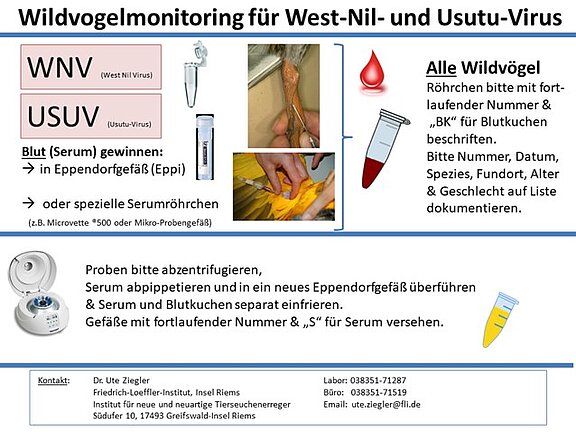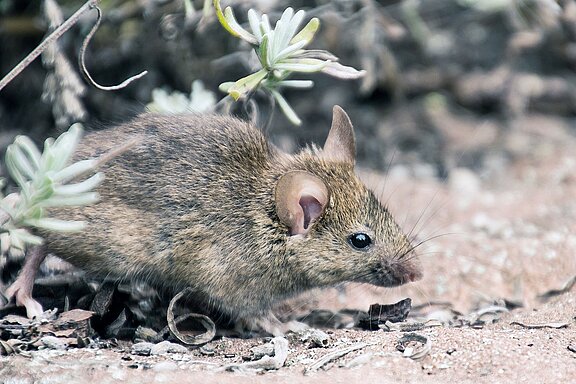Wild animals play a significant role in the emergence of new zoonotic infectious diseases. Here, they act as reservoirs or "mixing vessels" and/or are involved in the direct or indirect transmission and spread of the pathogens. The population of farm animals is regularly monitored through mandatory surveillance programs as part of public health and animal health. In contrast, there is no comprehensive monitoring for wildlife. Therefore, within the framework of the "DZIF TTU Emerging Infections", two networks have been established targeting specific wildlife and their pathogens: the RaBoPa- network focuses mainly on rat-associated pathogens, while the WBA-Zoo network focuses on wild bird-associated zoonoses. The goal of the project is to strengthen the network structures for faster identification and characterization of emerging rat- and wild bird-associated pathogens.
Monitoring activities at the WBA zoo are increasingly focused on nationwide surveys of resident and migratory birds for the annual occurrence and spread of Usutu virus and West Nile virus. In collaboration with various cooperation partners, blood samples and carcasses of wild and aviary birds are examined for the presence of arboviruses. Volunteer ornithologists and staff of the veterinary state investigation offices, the bird clinics at the veterinary faculties, the BNITM, the Aktionsgemeinschaft zur Bekämpfung der Stechmückenplage (KABS), the Naturschutzbund (NABU) as well as several veterinary bird practices and wild bird capture stations support this wild bird monitoring project, which is unique in Germany, by generating samples for this purpose. For 10 years, this wild bird network has made it possible to track the exact regional spread of USUV and contributed significantly to the detection of WNV introduction and its spread. In the future, it will also be used to identify new WNV hot spots regionally and more quickly through the increased involvement of zoo birds from the CuliFo2 project to better assess the potential threat to humans in specific areas. Furthermore, the investigations are currently being extended to the zoonotic Sindbis virus.
To date, the Rat Transmitted Pathogens Network has focused primarily on the Norway rat (Rattus norvegicus). Norway rats represent one of the most important synanthropic carriers of pathogens and can be found at the interface of domestic animals with humans, companion and domestic animals (pig or cattle farms), and in zoological gardens. Zoological gardens provide a strong interface between humans, zoo animals, and wildlife, mainly small mammals, including rats, mice, but also rabbits, hares, and foxes. Other synanthropic rodents, i.e., black rat (Rattus rattus) and house mouse (Mus musculus), have been mainly neglected. House mouse has been neglected in terms of its reservoir function for zoonotic pathogens. On the other hand, house mice had some characteristics that make them important for surveillance: (1) House mice live in a synanthropic manner near human settlements. (2) House mice in Germany and neighbouring European countries represent two subspecies (species) of house mouse, the Eastern European (ssp. musculus) and the Western European (ssp. domesticus). (3) In addition, house mice are often found at the interface with humans and domestic animals (pig or cattle farms) and in zoological gardens. The black rat is rare in Germany, but more common in other European countries. There are "rumors" that the house rat is expanding its range in Germany, i.e. in the northern part. This shift in focus of the network is reflected in the modified name "commensal rodent pathogens" (CoRoPa).
Further information can be found on the project page: https://www.dzif.de/de/projekt/krankheitserreger-frueh-identifizieren-ausbrueche-schach-halten
Involved INNT scientists:
Dr. Ute Ziegler
Prof. Rainer G. Ulrich
Dr. Balal Sadeghi (PostDoc)
Calvin Mehl (Doktorand)
Franziska Schopf (Doktorandin)






